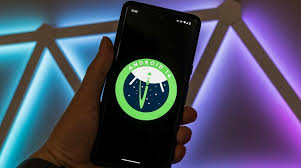A Comprehensive Guide to Screen Recording on Android
I. Introduction
Have you ever wanted to capture a tricky mobile game level you finally overcame, a bug you encountered, or perhaps, an unforgettable video call? Screen recording, an increasingly popular feature on smartphones, allows you to do just that. This versatile tool comes in handy in various applications, from tech support to creating online tutorials. This blog post will delve into screen recording on Android devices, providing a step-by-step guide and offering some tips and tricks to ensure you capture the best footage possible.
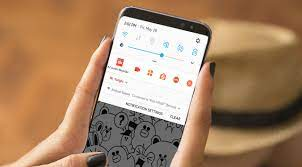
II. Understanding Android Screen Recording
Android's built-in screen recording feature is simple yet effective, making it a breeze to record content directly from your device. Over time, with various Android versions, screen recording has evolved significantly. Despite being a convenient tool, it does have certain limitations, such as lack of editing features, which is where third-party video editing apps come into play.
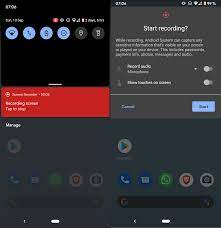
III. Android's Native Screen Recording Feature
Here's a quick guide to using Android's built-in screen recording feature:
- Swipe down from the top of your screen to open the notification shade.
- Look for the "Screen Record" option among the quick settings and tap on it.
- Choose your preferred settings for the recording, such as including audio or displaying taps.
- Tap "Start" to initiate recording.
Remember, the quality of the recordings heavily depends on your device's capabilities, and some older models might encounter difficulties with this feature.
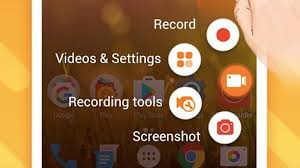
IV. Third-Party Screen Recording Apps for Android
While Android's built-in feature can satisfy basic needs, third-party apps offer more control and advanced features. Here are four popular choices:
- AZ Screen Recorder: Known for its user-friendly interface, this app includes a video editor and allows for HD and FullHD recording.
- DU Recorder: This robust tool offers high-quality recording and even features a GIF maker.
- Mobizen Screen Recorder: An excellent choice for gamers, this app provides clean recording and easy video trimming.
- ScreenCam Screen Recorder: A lightweight option, ScreenCam excels in offering a clutter-free and simple recording experience.
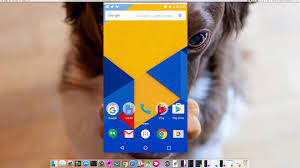
V. How to Use Third-Party Apps for Screen Recording
The setup for most third-party apps is quite similar. After downloading your preferred app:
- Launch the app and provide necessary permissions.
- Adjust settings as per your needs, such as resolution, frame rate, and audio.
- Start the recording using the on-screen control or notification bar shortcut.
- Save and edit the recording as required.

VI. Legal and Ethical Considerations of Screen Recording
Screen recording, while an excellent tool, comes with ethical and legal obligations. Always ensure you have the necessary permissions before you begin recording content, especially if you're planning on sharing it. This practice respects privacy rights and helps avoid potential copyright infringement.

VII. Tips and Tricks for Better Screen Recording
For a smoother screen recording experience, consider the following:
- Close unnecessary apps running in the background to avoid performance issues.
- Enable "Do Not Disturb" mode to prevent distracting notifications during recording.
- Regularly clear your device's cache to maintain optimal recording performance.
Remember, while high resolution offers better quality, it also results in larger files. Depending on your needs, you might want to balance quality and storage space.

VIII. Conclusion
Whether you're a content creator, a dedicated gamer, or someone seeking a digital record of certain activities, screen record on Android can prove to be an invaluable tool. While the built-in feature offers simplicity, third-party apps provide advanced controls and features. It's all about finding the solution that best fits your needs.
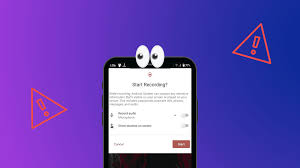
FAQ:
Can you screen record with sound Android?
Yes, you can record screen with sound on Android devices. Here's how you do it:
- Swipe down from the top of your screen to access the Quick Settings Panel.
- Look for the Screen Record option. If you can't see it immediately, you may need to swipe left to find it, or tap on the pencil icon to edit and add it to your panel.
- Once you tap on Screen Record, you'll get a few options. You can choose to record audio via the microphone, device audio, or both.
- Microphone audio is your voice or the ambient sound around you.
- Device audio is the sound coming from the apps on your device.
- After selecting your desired audio source, tap on Start to initiate the screen recording.
Please note that the exact process might vary slightly depending on the brand of your phone and the version of Android you're using.
Furthermore, third-party screen recording apps often provide additional options for recording sound, including more granular control over audio sources and quality. Remember to check the specific settings and features of the audio recording app you choose to use.
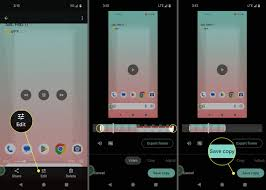
How do I record my screen on Android?
Recording your screen on an Android phone is straightforward, especially on newer Android versions that come with a built-in screen recording feature. Here's how you can do it:
Using Android's Built-in Screen Recording Feature to screen record on Android
- Swipe down from the top of your screen to open the notification shade.
- If you can see the "Screen Record" option in your Quick Settings panel, tap on it. If you can't see it, you may need to swipe left or edit your Quick Settings to add the "Screen Record" option.
- You'll get a few options, such as recording audio and showing touches on the screen. Select your preferences.
- Tap "Start". There will be a short countdown, and then your screen recording will begin.
- To stop recording, swipe down from the top of your screen again and tap the "Screen Recording" notification.
Please note that the exact steps can vary slightly based on your device's manufacturer and the Android version you're using.
Using a Third-Party App for recording screen android
If your Android device doesn't support built-in screen recording, or if you want more advanced features, you can use a third-party screen recording app. Here's a general guide on how to use one:
- Download a screen recording app from the Google Play Store. Some popular options are AZ Screen Recorder, DU Recorder, and Mobizen Screen Recorder.
- Open the app and grant the necessary permissions.
- Adjust the settings according to your preferences.
- Tap the "Record" or "Start" button to start recording your screen.
- To stop recording, tap the stop button, which could be in your notification shade or overlaid on your screen, depending on the app.

Why does my Android phone not have screen recording?
Screen recording is a feature that is native to Android 11 and above. If you're using an Android device that runs on Android 10 or below, you might not have a built-in screen recording feature.
However, there are exceptions, as some manufacturers include a screen recording feature in their custom Android screen skins even on lower versions android phones. These include Samsung, Xiaomi, and OnePlus, among others.
If you don't see the screen recording option, it could be due to one of the following reasons:
- Your Android version is too old: If your device is running on an older version of Android phone (before Android 11), it may not include the built-in screen recording feature. In this case, consider upgrading your Android version if your device supports it.
- Manufacturer restrictions: Even if your device is running on Android 11 or later, some manufacturers may choose to hide or disable this feature.
- Screen recording is hidden in your Quick Settings: In some devices, the screen recording option is not immediately visible in the Quick Settings menu. You may need to edit the Quick Settings panel to add the Screen Record toggle.
If your device does not natively support screen recording, you can always use a third-party app. There are many screen recording apps available on the Google Play Store like AZ Screen recorder app, Recorder, DU Recorder, and Mobizen, which offer comprehensive screen recording features.

Where do screen recordings go Android?
On Android devices, your screen recordings are usually saved in your phone's internal storage. Depending on your device and the app you're using, the exact location may vary slightly, but generally, you can find your screen recordings in one of the following locations:
- Gallery App: Your screen recordings are typically saved in a folder that can be accessed through your device's Gallery app. This folder is usually named "Screen recordings" or "Captures," though the name can vary by device.
- Files App: If you can't find your screen recordings in the Gallery, you can also check in your device's Files app. You can usually find them under the 'Movies' or 'Screenshots' folders in the device's internal storage.
- In the App Itself: If you're using a third-party screen recording app, the recordings might be saved in a specific folder within the app. Usually, you can find an option to access your recordings directly from the app's main screen or settings menu.
Remember, the storage location can depend on your device's settings and the specific screen recording app you're using. Be sure to check the screen recorder app for settings if you're unable to locate your screen recordings.

Does Android have a built in video recorder?
Yes, Android does have a built-in video recorder, which you can access through the default camera app. Here's how you can do it:
- Open the Camera app on your Android device.
- Depending on your phone model and operating system, you may need to swipe right or left, or select an option from the menu to switch to Video mode.
- Once you're in Video mode, press the red button to start recording.
- Press the button again to stop recording when you're done.
The recorded videos will typically be stored in the "Camera" or "DCIM" folder in your phone's internal storage or SD card if one is installed and selected as top of the screen or default storage.
For screen recording, Android phone 11 and later versions have a built-in screen recorder. For earlier versions, or if you need more advanced features, there are many third-party apps available on the Google Play Store that can record your Android screen.
